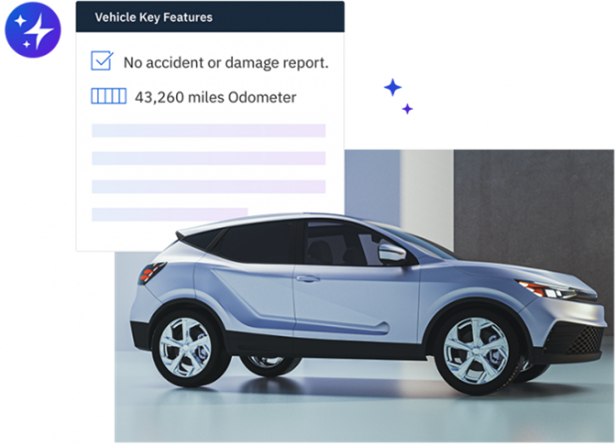Transparency in Aftermarket Sales

Article Highlights:
- Add-ons are one of the biggest areas of confusion for car buyers.
- Stay transparent with 3 tips for educating customers on aftermarkets.
Understanding aftermarket products has long been a challenge for car buyers. A 2017 report from the FTC found that add-on products were the biggest source of confusion for consumers during the F&I process. Customers interviewed as part of the study did not have an accurate understanding of product pricing, contract terms, and whether or not certain add-ons were required. In a more recent study, 72% of car buyers said they are not familiar with the F&I department and traditional products.
Some of this confusion may be due to intentionally deceptive dealership practices. But even if your store is compliant, customers can still struggle to gain clarity when it comes to aftermarket products. And when buyers don’t realize they are missing crucial details until after they’ve made a purchase, it can leave them feeling as though you weren’t transparent with them.
Fortunately, there are some steps you can take to ensure that you’re making every effort to help customers understand their options.
Provide information about aftermarket products throughout the sales process.
You might know aftermarket products like the back of your hand now, but you probably didn’t when you first started working in automotive. And you didn’t learn it all in a day either. It likely took a lot of training and repetition to attain the level of understanding you have currently.
Customers are the same way. You need to give them ample time and multiple opportunities to learn about add-ons so they are as informed as possible by the time they need to make a purchasing decision.
There are many places you can incorporate aftermarket education throughout your sales process aside from the traditional discussion in F&I.
- Your website is a great place to start. Most customers begin their car buying journey online doing research on different vehicles. Why not give them the opportunity to start thinking about add-ons from the get go?
- Additionally, when a customer schedules an appointment to shop for a new vehicle, send them resources about aftermarket options with their confirmation email. They’ll be more likely to review the information if you send it to them directly. With no time constraints or pressure, they’ll be able to better retain what they learn.
- Finally, when customers are waiting for F&I, you have another opportunity to give them informative materials to look at before they speak to an expert.
Don’t be afraid to start with the basics.
You don’t necessarily have to give customers granular details about specific products and packages right away. This information is important to discuss eventually, but many customers lack general knowledge about F&I, especially first-time car buyers.
With this in mind, consider providing overarching resources that educate the consumer about the F&I process and broad information on the purpose of aftermarket products. They will have a much better understanding of what to expect in F&I if they can review this information beforehand.
Americans Well-informed on Automobile Retailing Economics (AWARE) is an organization dedicated to educating consumers on topics like financing and add-ons. The Understanding Voluntary Protection Products page on their website is a great resource to share with customers as they begin learning about F&I.
Use different mediums to explain aftermarket products to customers.
While some customers might thoroughly read the materials you’ve provided prior to visiting your dealership, others may have different preferences for learning. Be sure you have options for them as well.
Many learn best by engaging in collaborative discussions. This is because customers feel more comfortable asking and answering questions when you’re conversing with them rather than presenting to them. Stay away from sales pitch style monologues to ensure you understand your customers’ needs and are providing clarity if confusion arises.
Additionally, make sure all customers have an opportunity to discuss their options face-to-face with an F&I manager – yes, even remote customers. Many assume that remote customers want to avoid interacting with dealership employees, but this isn’t actually the case. 40% of consumers say it is extremely important to speak with an F&I expert when shopping online.
Finally, verbal explanations of complicated concepts like GAP or extended warranties don’t always cut it. Videos or interactive tools can also help educate customers, especially those that are visual learners.
Final Thoughts
If you’re wary of changing too much at once, start by asking customers for their feedback on the aftermarket education you provide now. Ask them about their experience at your store and find out how they prefer to learn about add-ons. Then, use their answers to prioritize making changes to your current process.
Although F&I can be confusing, it doesn’t have to be. It all comes down to when and how you educate customers on aftermarket products. If you provide information throughout the process using a variety of education techniques, your customers will be more knowledgeable about the items they purchased and your dealership will earn a reputation for transparency.
Related Articles:

The Future of Variable Ops with Experts at NADA 2025
Explore how AI is transforming variable operations in automotive retailing with insights from NADA 2025. Learn about efficiency, profitability, and fraud prevention from industry leaders.

Decision made regarding the Vehicle Shopping Rule – now what?
Check out five key takeaways from the Vehicle Shopping Rule to keep your dealership safe from FTC enforcement actions.

3 Ways AI Can Elevate Your Dealership’s Online Inventory
On average, Americans are exposed to between 4,000 and 10,000 advertisements every day. From commercials on TV to billboards on your way to work, all…

The Pizza Playbook – What Ordering Pizza Teaches Us About F&I
For as long as I can remember, my family had “pizza night” every week. Without fail, every Friday evening we’d all gather around the computer…















